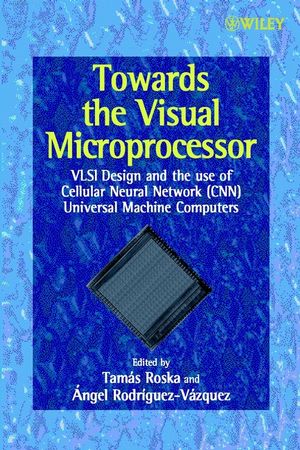Towards the Visual Microprocessor: VLSI Design and the Use of Cellular Neural Network Universal MachinesISBN: 978-0-471-95606-8
Hardcover
360 pages
January 2001
 |
||||||
Written by a group of leading researchers in the field, this is a pioneering work, providing a concise analysis of the topic by the inventors of the CNN universal machine and the supercomputer chip. Opening with a foreword by the respected academic, Professor Leon Chua, the book progresses to explore circuit design, prototyping and analogical algorithms. Subjects covered include the VLSI design and implementation of CNNs, the testing of CNN chips and a detailed analysis of the new system for prototyping and interfacing the CNN universal chips
? Includes applications in: Neurocomputing, Machine Vision, Image Processing and VLSI Signal Processing
? Provides simple algorithms to design and synthesise complex circuits
? Written and edited by world authorities in this field, including Leon Chua who invented CNNs in the late 1980s.
This text follows on from Roska's previous success - Cellular Neural Networks and D3 - with this groundbreaking work about a rapidly developing and increasingly influential field of circuit theory. This text would be of great interest to a broad audience including postgraduate and advanced students, researchers and professionals in electrical and electronic engineering, computer science, mathematics and neurobiology.
? Includes applications in: Neurocomputing, Machine Vision, Image Processing and VLSI Signal Processing
? Provides simple algorithms to design and synthesise complex circuits
? Written and edited by world authorities in this field, including Leon Chua who invented CNNs in the late 1980s.
This text follows on from Roska's previous success - Cellular Neural Networks and D3 - with this groundbreaking work about a rapidly developing and increasingly influential field of circuit theory. This text would be of great interest to a broad audience including postgraduate and advanced students, researchers and professionals in electrical and electronic engineering, computer science, mathematics and neurobiology.



